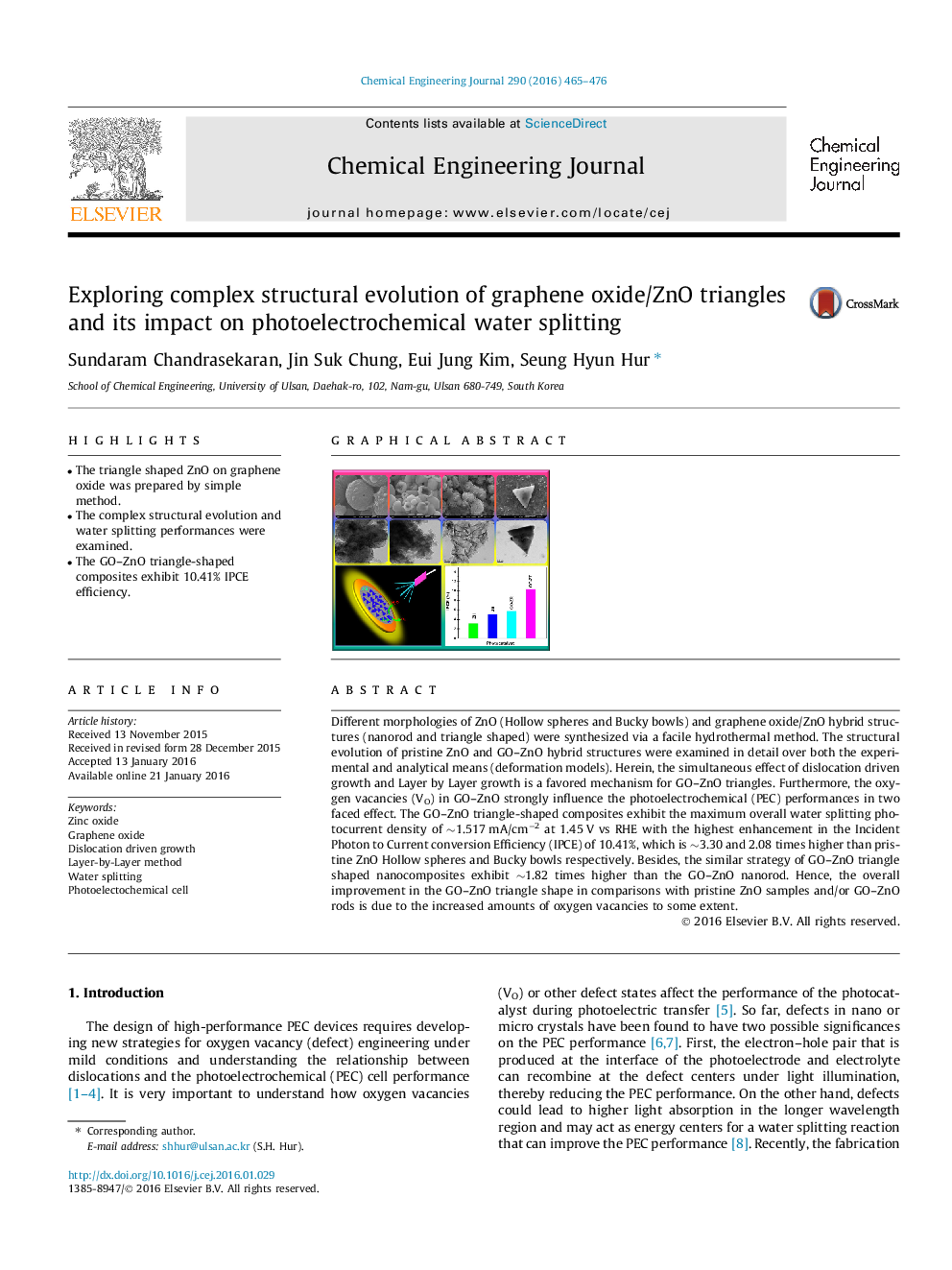| Article ID | Journal | Published Year | Pages | File Type |
|---|---|---|---|---|
| 145798 | Chemical Engineering Journal | 2016 | 12 Pages |
•The triangle shaped ZnO on graphene oxide was prepared by simple method.•The complex structural evolution and water splitting performances were examined.•The GO–ZnO triangle-shaped composites exhibit 10.41% IPCE efficiency.
Different morphologies of ZnO (Hollow spheres and Bucky bowls) and graphene oxide/ZnO hybrid structures (nanorod and triangle shaped) were synthesized via a facile hydrothermal method. The structural evolution of pristine ZnO and GO–ZnO hybrid structures were examined in detail over both the experimental and analytical means (deformation models). Herein, the simultaneous effect of dislocation driven growth and Layer by Layer growth is a favored mechanism for GO–ZnO triangles. Furthermore, the oxygen vacancies (VO) in GO–ZnO strongly influence the photoelectrochemical (PEC) performances in two faced effect. The GO–ZnO triangle-shaped composites exhibit the maximum overall water splitting photocurrent density of ∼1.517 mA/cm−2 at 1.45 V vs RHE with the highest enhancement in the Incident Photon to Current conversion Efficiency (IPCE) of 10.41%, which is ∼3.30 and 2.08 times higher than pristine ZnO Hollow spheres and Bucky bowls respectively. Besides, the similar strategy of GO–ZnO triangle shaped nanocomposites exhibit ∼1.82 times higher than the GO–ZnO nanorod. Hence, the overall improvement in the GO–ZnO triangle shape in comparisons with pristine ZnO samples and/or GO–ZnO rods is due to the increased amounts of oxygen vacancies to some extent.
Graphical abstractFigure optionsDownload full-size imageDownload as PowerPoint slide
